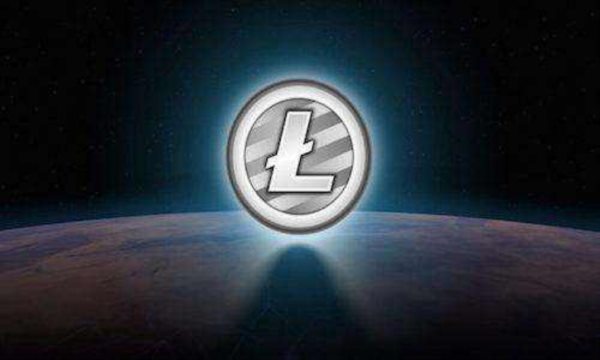Avalanche 基金会正在扩大其“文化催化剂”计划的范围,为购买模因币提供资金。
这只 1 亿美元的投资基金最初专注于不可替代代币 (NFT),但 12 月 29 日的一份公告显示,至少其中一部分拨款将用于资助 memecoin 收购。
Avalanche 社区和一些市场分析师对此举做出了积极反应,但 memecoiners 仍然面临加密行业内的耻辱。
在最近的一篇博客文章中,以太坊联合创始人 Vitalik Buterin 将 memecoiners 描述为“德根赌徒”。
然而,这并没有削弱那些已经沉浸在模因币领域的人的热情。
加密货币研究员和 Avalanche 倡导者Emperor Osmo 是一位对此举感到兴奋的评论员。
Osmo 向 Cointelegraph 解释了为什么投资 memecoin 的决定是一个积极的决定,最终将推动 Avalanche 的增长。
“我将模因币等同于社会运动的力量,如果没有强大的社会运动的支持,区块链就不可能达到大规模,”奥斯莫说。
Osmo 担任 Osmosis Labs 的“Lead Llama”头衔(毕竟这是加密货币),他表示所有最强大的区块链生态系统都有令人信服的叙述和“具有共同目标的社区”。
Osmo 列举了比特币、以太坊和瑞波币作为区块链的例子,这些区块链拥有“紧密结合的社区”,也找到了“最简单的产品市场契合度”。
Osmo 认为,Avalanche 可以通过其文化催化剂培育强大的文化,从而产生同样的品质。
Memecoin 风险和回报
分析公司 Flipside Crypto 的数据科学家 Carlos Mercado 的观点与 Osmo 类似,尽管他强调 memecoin 本质上是有风险的投资。
“模因为人们提供了加入‘群体’的机会,”梅尔卡多告诉 Cointelegraph。
“无论是早期的 memecoin 还是 WallStreetBets subreddit(推动 GameStop 狂热的 Reddit 小组)的活跃成员,meme 都能创造一种归属感。
虽然这种情况与人们的个人财务状况相交叉会产生风险,但我们不应对 2008 年之后、新冠疫情、零工经济和普遍通胀之后的人们在风险曲线上走得更远感到惊讶。”
即使存在潜在的风险因素,梅尔卡多也看到了模因币的额外长期好处。
Mercado 的观点是,模因交易为新人提供了完美的训练场,为进入更广泛的加密货币市场提供了门户。
“模因的积极案例是,至少在加密领域,模因可以具有教育意义。
提供流动性不仅仅依赖于价格行为,还可以赚取掉期费用,在 Aave 等市场上放贷可以赚取借贷费用。
与股票相比,使用这些代币的加密货币有更多的选择,订单流和内幕交易的支付非常猖獗,”梅尔卡多说。
While meme culture may be a fickle mistress with inherent risk, Mercado went on to point out: “The memes may go, but the knowledge doesn’t.”
Not everyone in the crypto sphere is quite so bullish on memecoin culture. In a recent blog post, Buterin lamented that rising transaction costs on Ethereum had edged out most users, leaving behind “degens” and other elements he views as largely undesirable.
Dogecoin (DOGE), which is seen by many as the original memecoin, saw a massive price spike in 2021. Source: CointelegraphIn the Dec. 28 post, “Make Ethereum Cypherpunk Again,” Buterin said, “Degen gamblers can be okay in moderate doses, and I have talked to plenty of people at events who were motivated to join crypto for the money but stayed for the ideals. But when they are the largest group using the chain on a large scale, this adjusts the public perception and the crypto space’s internal culture, and leads to many of the other negatives that we have seen play out over the last few years.”
Buterin is not alone in his general disdain for memecoin culture. On Dec. 4, Jan3 CEO and Bitcoin (BTC) maximalist Samson Mow told Cointelegraph why Bitcoiners tend to hold the rest of the crypto space in such low regard.
“It’s dog tokens, baby dog tokens, JPEGs and other random things [...] Bitcoin has nothing to do with these things.”
While Mow and other maximalists may want to put as much space between Bitcoin and memecoins as possible, the United States Securities and Exchange Commission’s recent approval of spot Bitcoin ETFs is expected to lead to a wave of fresh capital, leading to further speculation in the wider market.
Related: BlackRock drops ‘boomer’ Bitcoin ETF ad as marketing blitz ramps up
Historically, when Bitcoin does well, so does the rest of crypto. As for the criticism, Mercado strongly defends memecoins against the suggestion that they embody the worst elements of the industry.
“Ponzi schemes, hacks, pump-and-dumps, and rug pulls are the worst elements of crypto,” Mercado said. “The best memecoins won’t have these issues. Avalanche has stated several metrics they’re monitoring — like fair launches, maturity, liquidity ownership — to avoid supporting these bad elements.”
Memecoiners on Avalanche are now looking to the future with a palpable sense of hope and expectancy.
Several projects on the blockchain are touted as potential investments for the Avalanche Foundation. If market speculation is anything to go by, Coq Inu (COQ), Shibavax (SHIBX) and Husky Avax (HUSKY) may be among the contenders for an injection of capital from the culture catalyst. All three tokens experienced positive price action in the wake of the Avalanche Foundation’s announcement in December.
Cointelegraph spoke with the CEO of Husky Avax, known simply to the community by his pseudonym, Paps. As Paps sees it, the Culture Catalyst is just the latest in a long line of endeavors that Avalanche has pursued to help galvanize its community.
“Those outside of Avalanche might not have noticed, but Avalanche has been putting a lot of time, effort and money into culture in the past two years,” Paps told Cointelegraph. “For a while, it was mainly focused on driving artists to Avalanche, and then it shifted to creating volume in NFTs. Because of that effort, Avalanche has a significant artist community, and volume has really picked up recently.”
The memecoin advocate acknowledged that not every initiative has gone entirely according to plan or resulted in success, but they argued that the level of commitment has never wavered.
“Not everything they’ve done has worked out, but they’ve shown [Avalanche] they’re willing to put their money where their mouth is, and when something doesn’t work out, they try something else.”
Husky’s Paps also appealed to those who have criticized or dismissed memecoin culture, offering an alternative point of view for consideration.
“While some argue that memecoins detract from the ideals of decentralization, open participation, censorship resistance and credible neutrality, others believe that memecoins can coexist with blockchains and even help attract new users to the ecosystem,” he said.
“The ideal of decentralization means that we don’t really have control over what communities do with the blockchain. If communities decide that memecoins are what motivates them and are what helps them attract new users, who are we to argue with the masses?”
As Paps pointed out, if the market decides it wants its fix of memecoins, then, by the forces of democracy and decentralization, the argument against them is moot.
While it is easy to draw ideological battle lines between memecoiners and the rest of crypto, some argue that the distinction is not as pronounced as it may appear on the surface.
Barney Mannerings, co-founder of the decentralized exchange Vega Protocol, told Cointelegraph, “There is not necessarily an ideological difference here. It’s perfectly possible for Avalanche to also be focused on cypherpunk ideals.”
Paps backs this point of view, suggesting that blockchains don’t need to choose one path or the other and can enjoy broader appeal in multiple sectors. He argues that memecoin culture is an additional bonus for the Avalanche ecosystem, the primary focus of which lies elsewhere.
“Avalanche is known for being focused on institutions, and they’ve locked in great deals in that regard, but they’re making sure not to forget other types of users,” he said.
Even Buterin, who has little love for memecoins, concedes that “degen gamblers can be okay in moderate doses.”
当然,模因币的未来并不取决于任何个人的认可,无论他们多么受尊重或有影响力。
仇恨者可以仇恨,但在新代币可以在几分钟内部署的时代,他们无力阻止模因币的雪崩。


gz呺Web3团子周二,美联储主席杰罗姆·鲍威尔在国会作证了两个多小时,其中一个引人注目的时刻是参议员伊丽莎白·沃伦和鲍威尔之间的激烈交锋。沃伦猛烈抨击鲍威尔,因为加息会扼杀就业机会,而且缺乏阻止失控列车发生的计划。沃...


针对沃伦对美国证券交易委员会(SEC)批准现货比特币ETF提案的批评,Lummis辩称,法定货币已洗钱超过9亿美元,远远超过与加密货币相关的90万美元。与此同时,参议院银行委员会成员、美国参议员辛西娅·鲁米斯(Cynth...


据CryptoPotato报道,支持加密货币的律师约翰·迪顿(JohnDeaton)将在2024年马萨诸塞州参议院竞选中挑战加密货币著名批评者伊丽莎白·沃伦(ElizabethWarren)。在马萨诸塞州,现任参议员伊丽...


约翰·迪顿在加密货币社区的支持下在参议院竞选中挑战参议员伊丽莎白·沃伦约翰·迪顿(JohnDeaton)是一位著名的律师,支持已宣布打算在即将到来的马萨诸塞州参议员竞选中与参议员伊丽莎白·沃伦竞争。在最近向X上的324,...